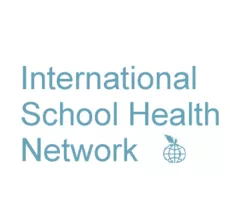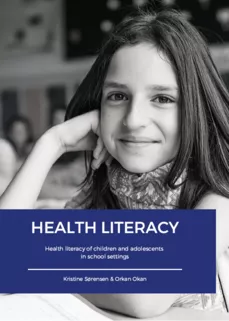Health literacy at the International School Health Network

With the launch of the FRESH Working Group on Health Literacy, Life Skills & Social Inclusion, health literacy has also become an important topic at the International School Health Network (ISHN). ISHN is part of the WHO Collaborating Centre on Community and School Health in British Columbia, Canada, and is affiliated with the Centre for Educational Leadership and Policy, Faculty of Education, Simon Fraser University, Canada. A number of organizations, researchers and government representatives have established an informal and international network with the aim of exchanging information on school health promotion and prevention and strengthening and promoting collaboration in this area. The overarching goals are to promote young people's health, safety, equity, learning, social development, and environmental awareness through effective school and school-based programs, policies, and practices. Members are primarily drawn from the health and education sectors, and ISHN has long evolved into an interdisciplinary and, most importantly, intersectoral network. The ISHN website and affiliated FRESH websites contain a database with lots of documents and information on school-based health promotion and prevention from all regions of the world.
Together with the President of the International Health Literacy Association (IHLA) Dr. Kristine Sørensen (Global Health Literacy Academy, Denmark) and with the support of ISHN Director Douglas McCall, Orkan Okan, as a member of the FRESH Working Group on Health Literacy, Life Skills & Social Inclusion, has developed the ISHN report "Health literacy of children and adolescent in the school setting", which is used as part of the work of ISHN and the FRESH Working Groups. This report provides insights into health literacy in the school setting, taking an international perspective. It explicitly defines health literacy for the needs of ISHN. In addition, numerous approaches to holistic school health promotion are presented, which are used in different Regions while many of which are also linked to health literacy. Furthermore, the intersections with the internationally used curriculum "health, personal, and social development" (HPSD curriculum) are elaborated and health literacy as an outcome to such curriculum is cross-linked with it. The report also presents curriculum approaches to strengthening health literacy in schools from other countries (e.g., USA and Australia) .
Summary

This concept note explains the concept of health literacy and applies it to the context of children and health-promoting schools. It indicates ways on how health literacy can be measured and monitored; shows the relevance of health literacy for emerging challenges such as equity, gender, alienation and climate change; highlights important health literacy learning outputs from interventions, and showcases the role of teachers in the advancement of health literacy. Lastly, it discusses future avenues in relation to the development of health literacy for children and adolescents.
- Health literacy is linked to literacy and entails the knowledge, motivation and competencies to access, understand, appraise and apply information to form judgement and make decisions regarding healthcare, disease prevention and health promotion to maintain and promote quality of life during the life course.
- Limited health literacy is detrimental to health across the lifespan. It is a neglected public health challenge. Nearly one-third or more of the population is thought to have limited health literacy according to research in Europe and beyond.
- Effective health literacy interventions as part of, for example, health-promoting school programmes, can positively influence educational and academic performance, which, in turn, can have long-term benefits during the life course.
- A whole-of-society and whole-of-government approach are encouraged as the promotion of health literacy for children and adolescents is typically conducted outside the health sector, for example, as part of formal and non-formal education.
- Recognising and respecting that education is the core business of schools and educational settings, it is paramount that health literacy as an outcome of health education becomes an integral part of curricula from an early childhood.
- Health-promoting efforts should be age- and gender-specific in order to maximise learning output, taking into account the existing health literacy levels of the children and adolescents.
- Proper evaluation of health literacy interventions as well as general measurement and monitoring of health literacy development is encouraged to clarify the impact of these interventions.
- It is encouraged to apply a pragmatic, age-specific focus when developing health literacy measurement for children and adolescents and preferably to involve all relevant stakeholders, such as researchers, teachers, decision-makers as well as children in the development.
- It is important to take into account that health literacy is content- and context-specific when considering the potential outcomes and challenges in the implementation of health literacy interventions.
- The impact of health literacy at the individual as well as the societal level is critical, as improved health and educational outcomes in school increase the potential for better health and human and economic benefits for children when they reach adulthood. These effects may be intergenerational and passed down to future generations.
- Early childhood and early childhood education are yet to be considered important targets for tackling health literacy problems in the life course despite being a critical stage for the establishment of the prerequisites for the skills, behaviours and actions known to be the main components and outputs of health literacy.
- Policy and intervention should focus on early childhood development and on addressing the social determinants of adversity to sustain equitable health literacy development in the life course.
